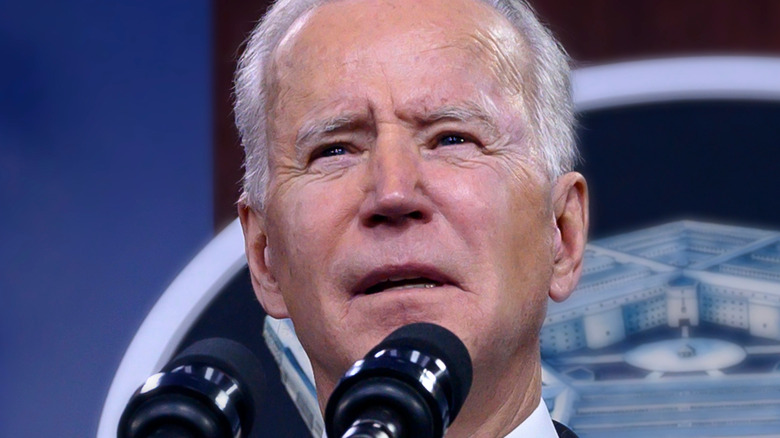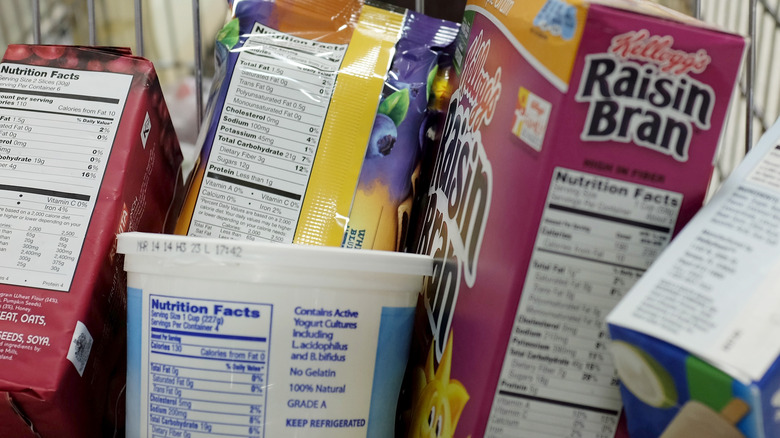The Biden Administration Is Pushing For Big Changes To Food Labels
It's easy to overlook food labels. Identifying — and subsequently, understanding — nutritional facts isn't straightforward, nor is it likely your first thought when buying a package of food. However, reading the label on your purchases benefits your health, especially when buying grains. Both the FDA and the CDC recommend a few label-reading tips that will make understanding nutrition all the easier.
According to the CDC, labels overview important information, including the number of calories and the carb, fat, fiber, protein, and vitamin content per serving. These numbers are typically based on daily, 2,000-calorie diets, though you should generally opt for foods whose labels reflect high amounts of fiber, vitamins, and minerals. Avoid packages with high percentages of calories, sugars, saturated and trans fats, and sodium. And, per the FDA, always check the serving size before consumption. The serving size, however, is not necessarily a recommendation of how much you should eat or drink.
Given all the information packed into a nutritional label, you'll want to at least give the package a scan, so you know what you're eating. It is this very knowledge that the Biden Administration hopes to communicate, reflected by recently-announced plans to relocate nutritional labels.
President Biden wants to put nutritional labels front and center
So long, searching for nutritional information. President Biden wants to move food labels from the back of food packages to the front, communicating health-related information in a quicker, more seamless manner (per NPR). The effort coincides with the White House's goals to mitigate hunger and diet-related illnesses and diseases and improve the overall health of Americans.
Putting this plan into action — and shelves — may take some time. Biden's strategy requires support from Congress and changes to laws, as well as updates to physical packaging. The White House has called for the FDA to research and propose new guidelines for nutritional labeling. Labels need to be clear and avoid misleading jargon, like packages' often-unfounded and casual uses of the word "healthy."
This is not the first time that President Biden has pushed for food-related changes. He recently announced plans to advance biotechnology that will likely spur the sector of bioengineered food. There are also talks of changes to farm bills aimed at helping the agricultural industry. Clearly, the White House is grappling with food-related upgrades head-on — much like grocery shoppers may encounter nutritional labels.

